Hemya – village life, community and talks
12. + 13. February 2023
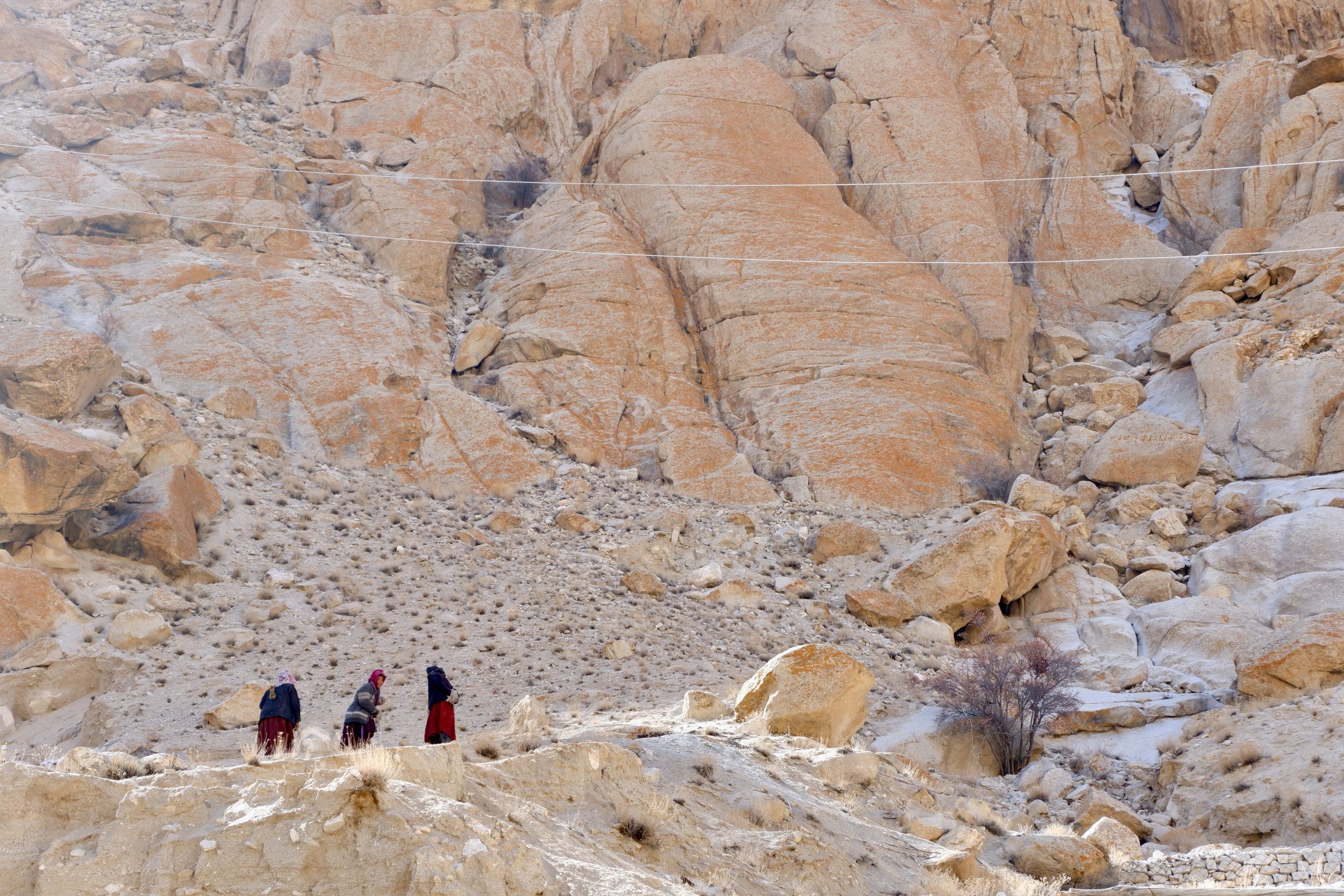
Hemya is 80 km east of Leh on the Indus River and has just over 40 households. Some are right on the big road, others stretch up a small valley. Mostly older people live here – the others have moved towards Leh or even further away. First I walked a little along the road. There were some people busy making an Indus crossing for a herd of yaks, which then came trotting along.
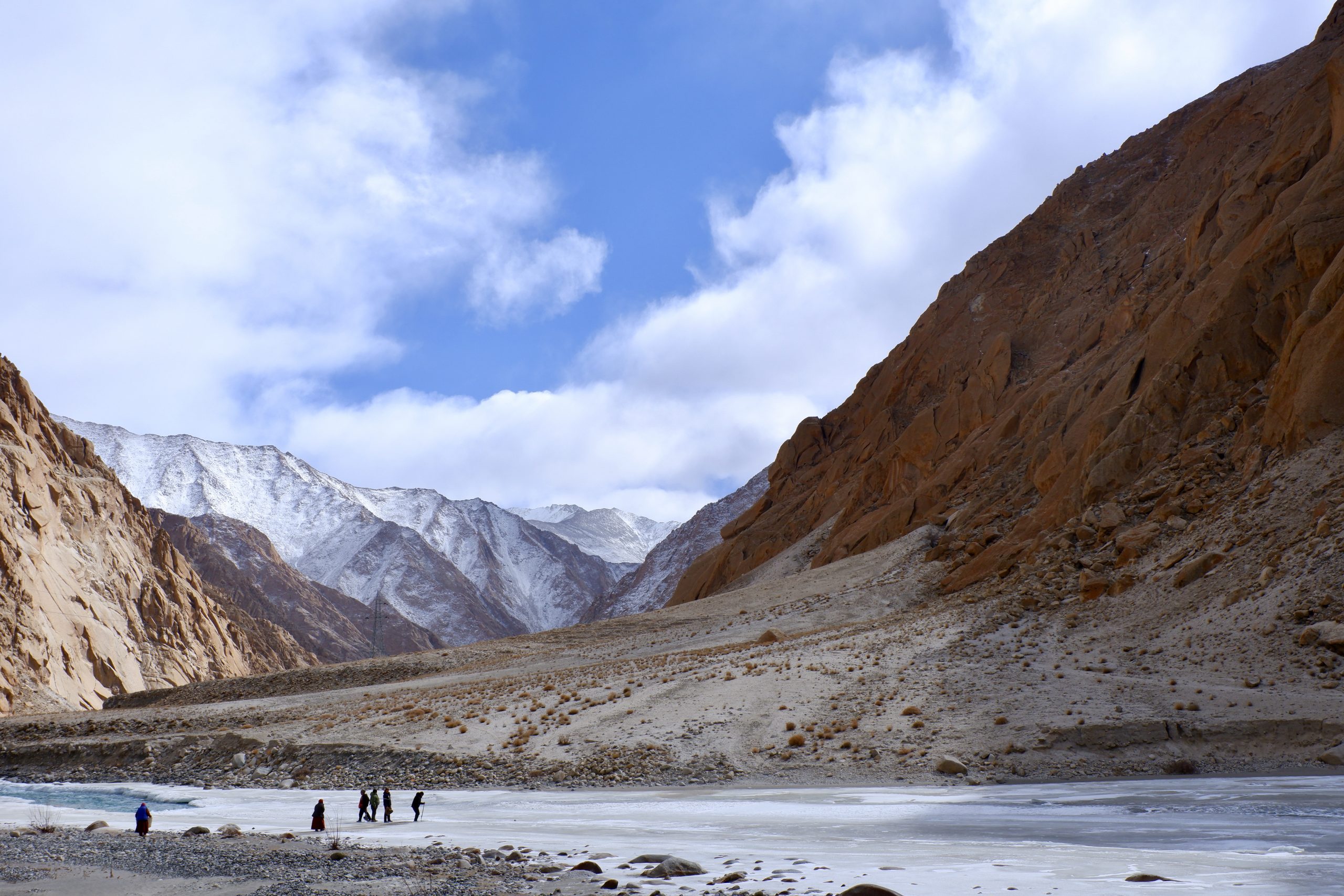 Induspassage
Induspassage
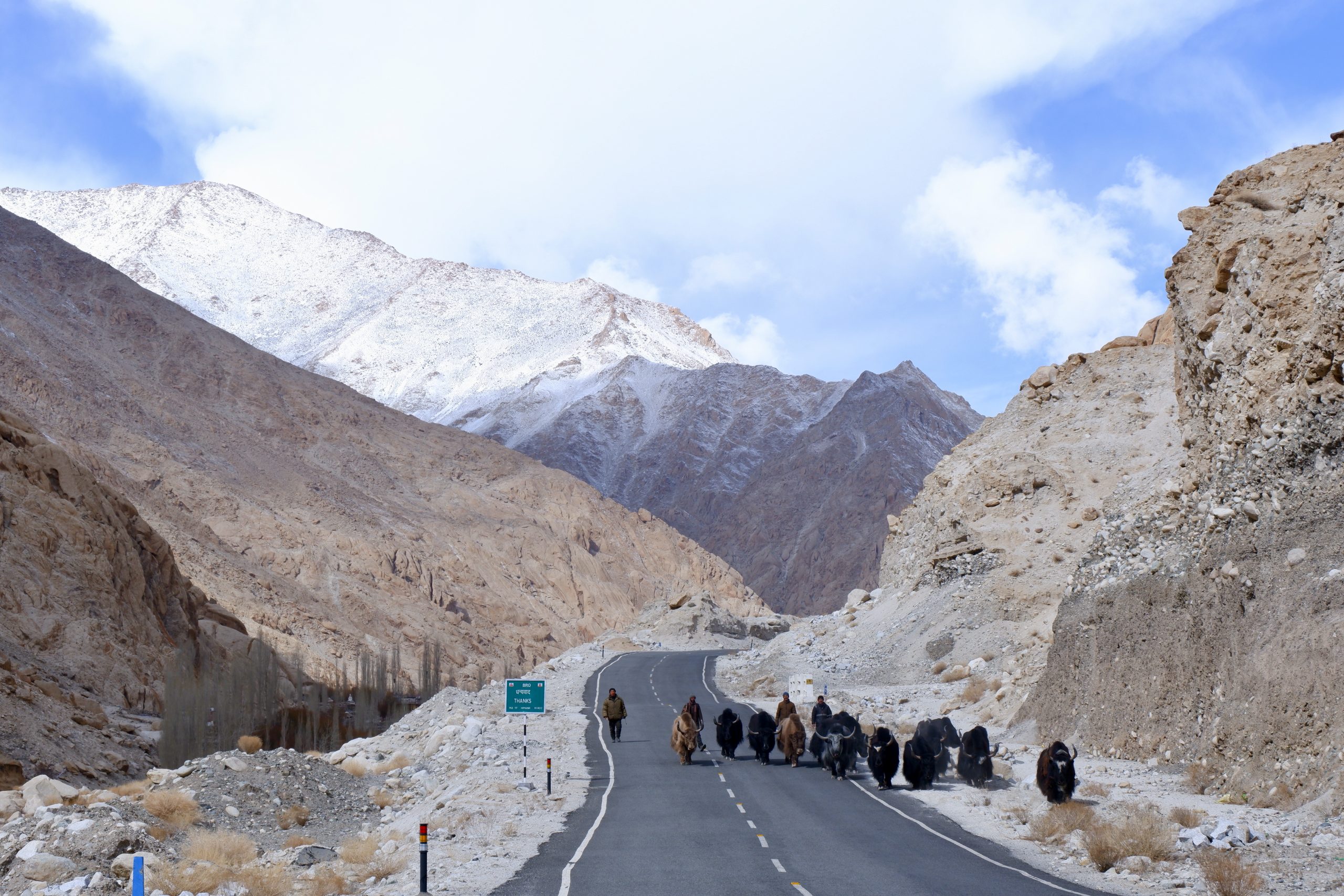 Yakherd
Yakherd
Then I went in the other direction to the village. First the Indus had to be crossed on a road bridge.
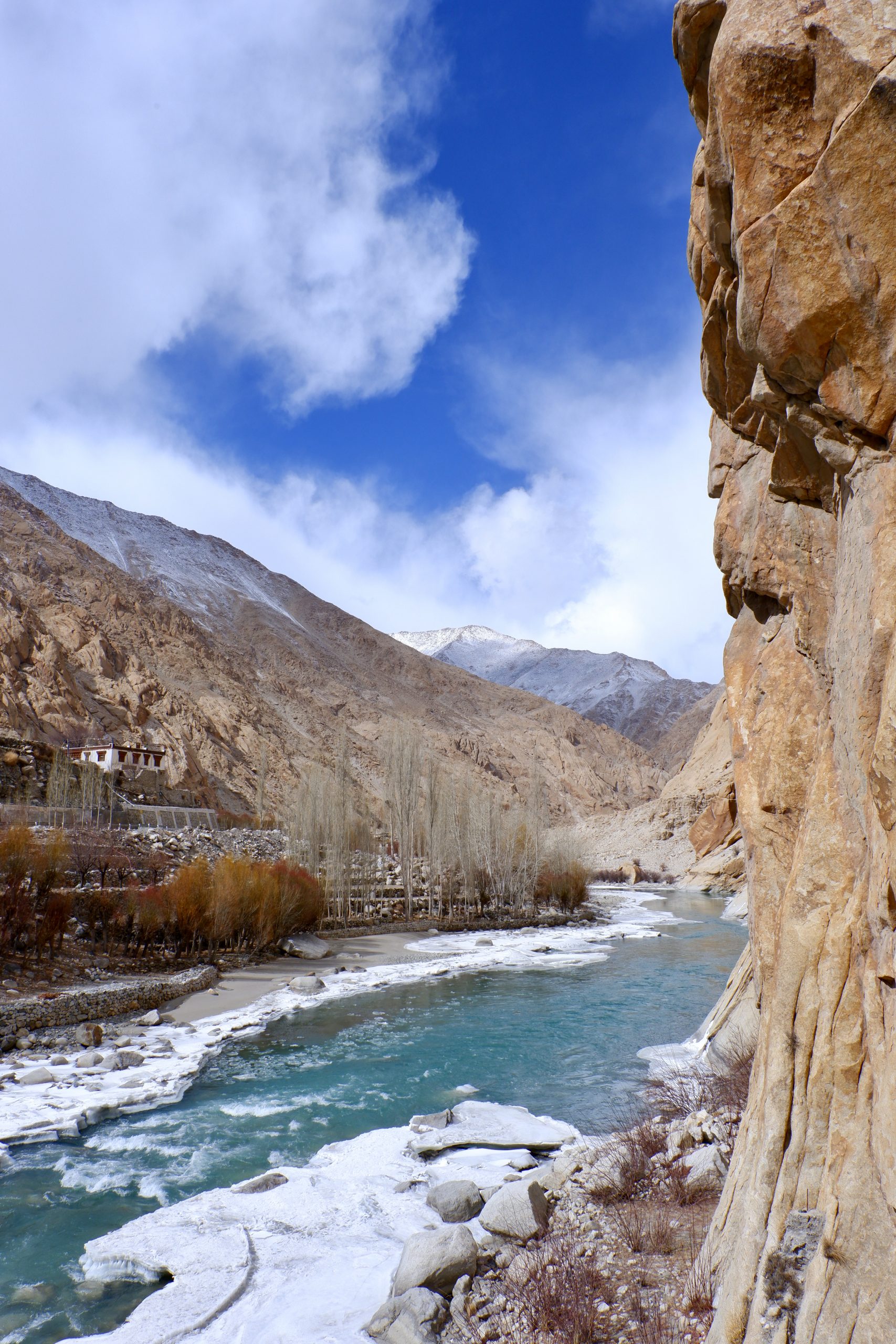 Indus
Indus
Then I met some girls fetching water. This day one of them had to go 10 x as her mother wanted to do some laundry.
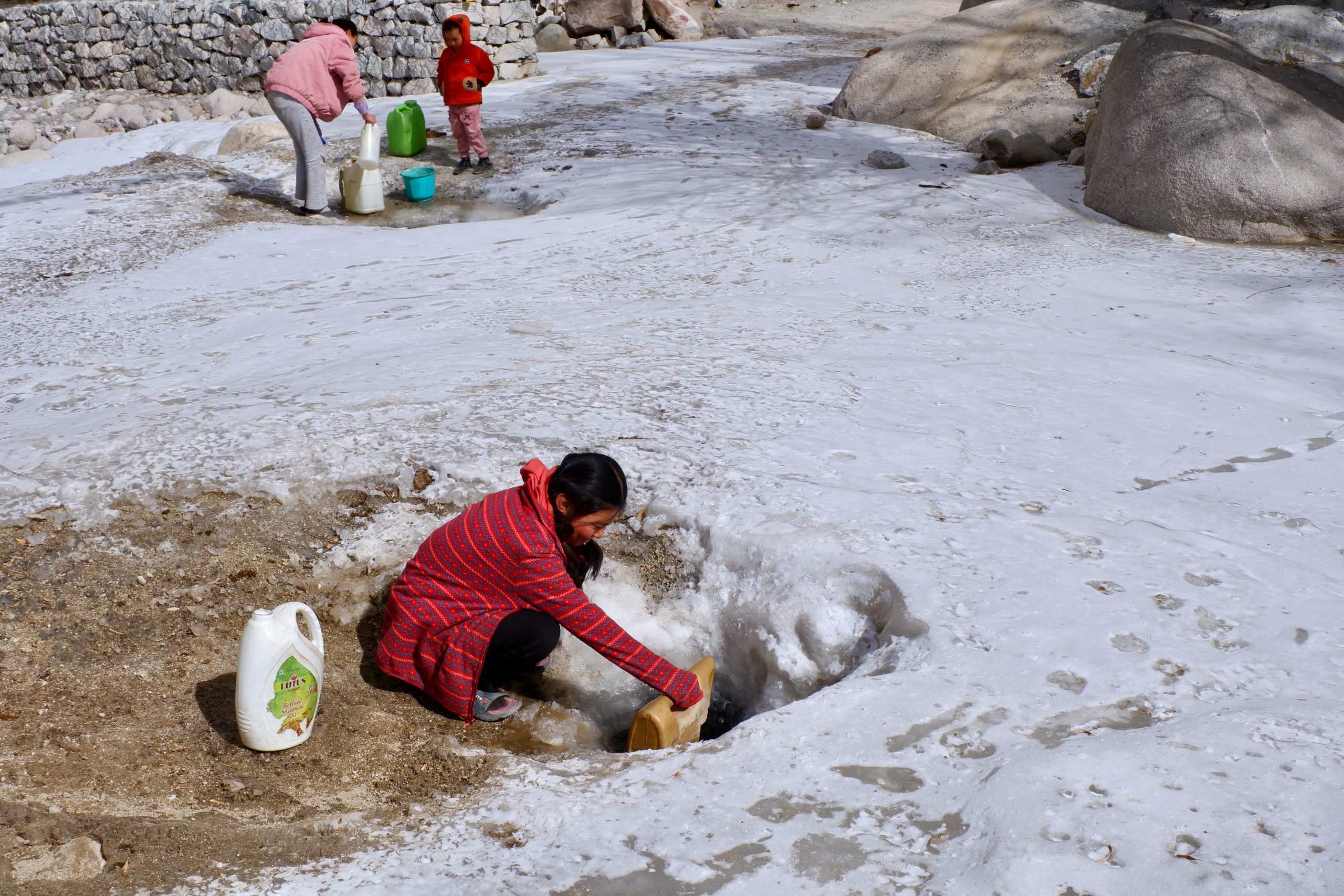 fetching water
fetching water
But she took a break (or was already finished) and accompanied me with her little sister. Her parents have professions with good earnings and a second flat in Leh, where they live most of the time. She goes to Druk Padma Karpo School, one of the best schools in Ladakh, which is in Shey. She is now in grade 6 and likes English. She also spoke really well. She prefers to be at school, where there are all the children. In the village there are not so many and she gets a bit bored. In Hemya they live in an old big house, but the parents are building a big new one which is almost finished. Her favourite animal is a lion and her favourite colour is black and she has no more siblings than her sister.
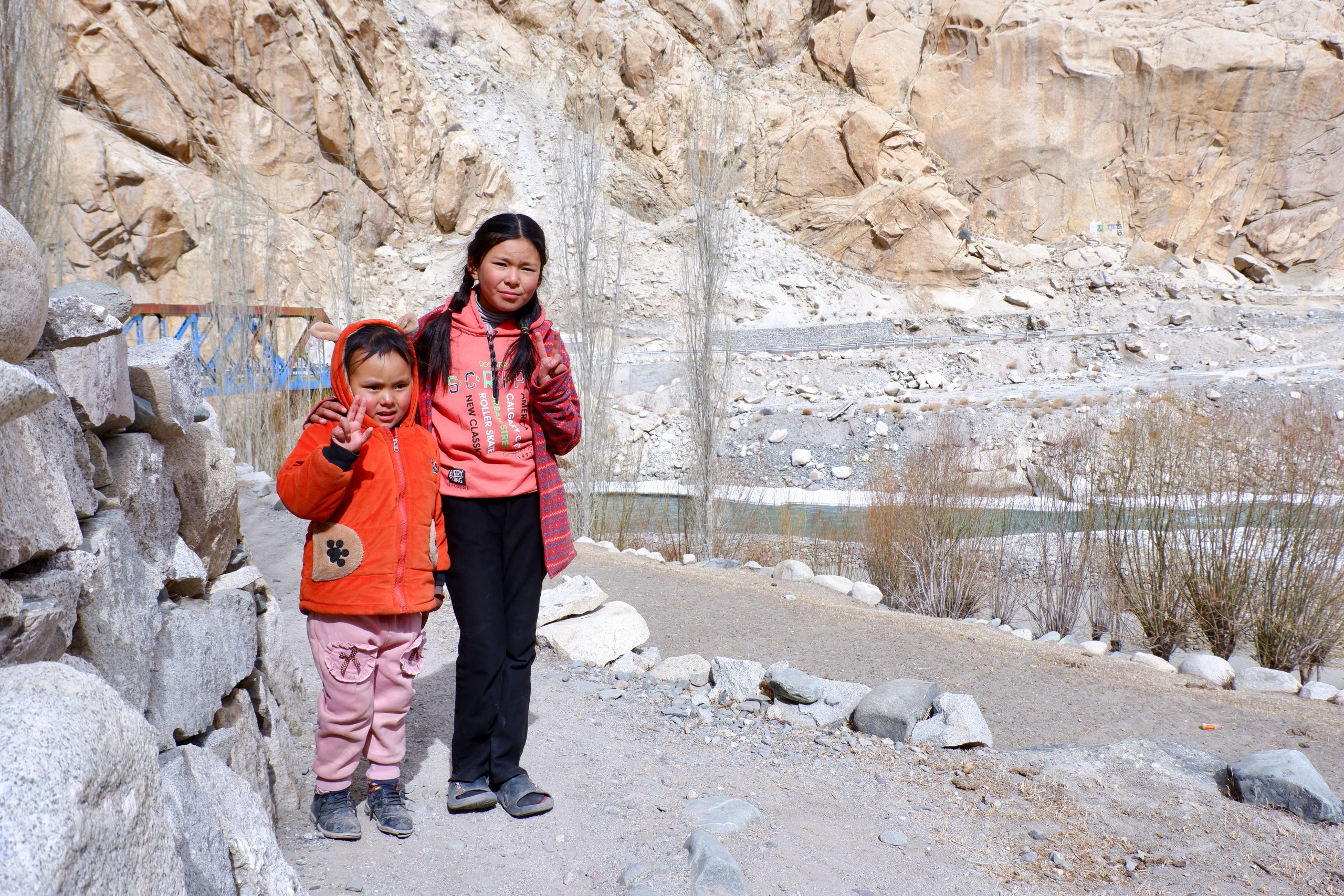 Company
Company
Afterwards, I went out again with Dolma. She is practically related to the whole village, either through her husband or otherwise to her mother. So we were able to visit two households.
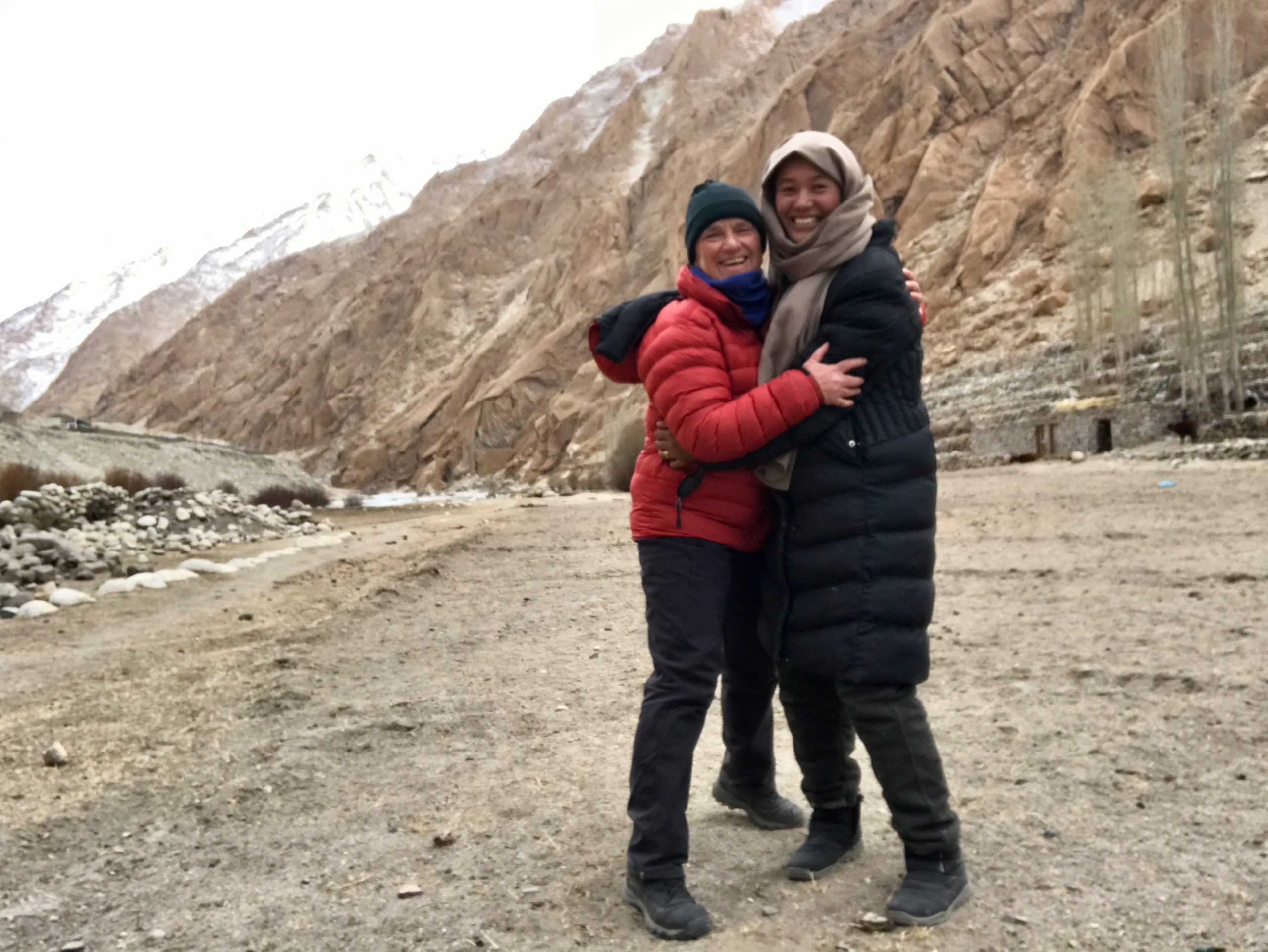 me and Dolma
me and Dolma
I did not take photos in the first household. A married couple lives there with their 3 children and the husband’s unmarried sister. In the whole of Hemya there are 5 unmarried women of slightly older age. One of them is a nun. I had not expected that. Then we stopped at an older woman’s house, she was very lively and funny and we talked a lot. She asked how much money I would give Dolma. None, we are just friends. Oh, that’s fine, can she be my friend too? Well, maybe it’s a little difficult with the language? Oh, if Dolma and I sit around and speak English all day, she is sure she’ll be able too soon!
She likes to stay in her village and doesn’t like trips to the big city of Leh. Her daughter brings her everything she needs to buy. She has five cows. I asked her about the male cows. There are none, only female cows are born here. That can’t be right, can it? We went back and forth. There really are no male cows in the whole village. Maybe they are sold to the butcher right away?
Besides, she never likes to sit around quietly, when she does sit, she weaves. She showed us outside. It takes her a week to make a small carpet when there is not so much other work to do.
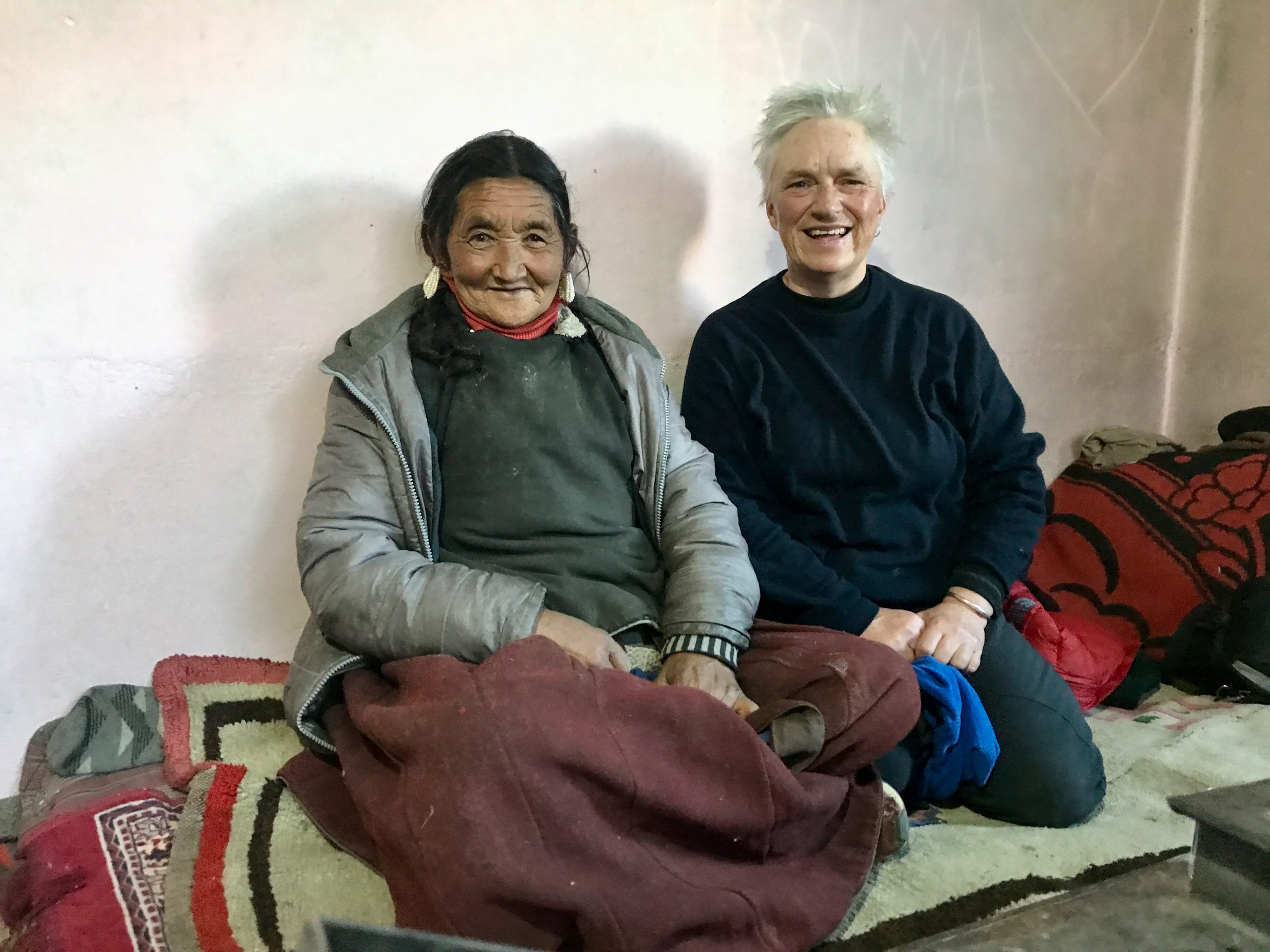 visit at the slightly elderly lady
visit at the slightly elderly lady
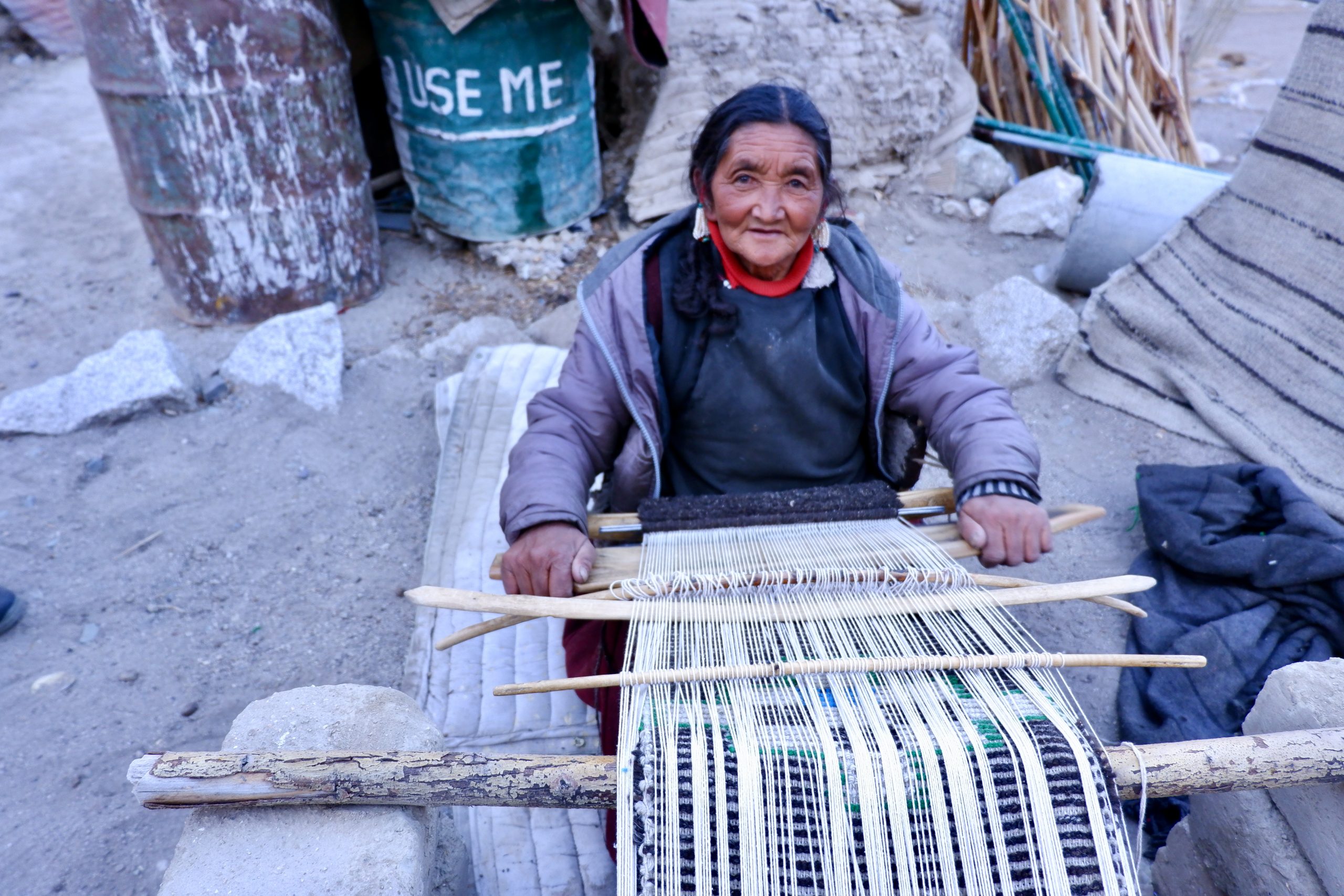 Weaving 1
Weaving 1
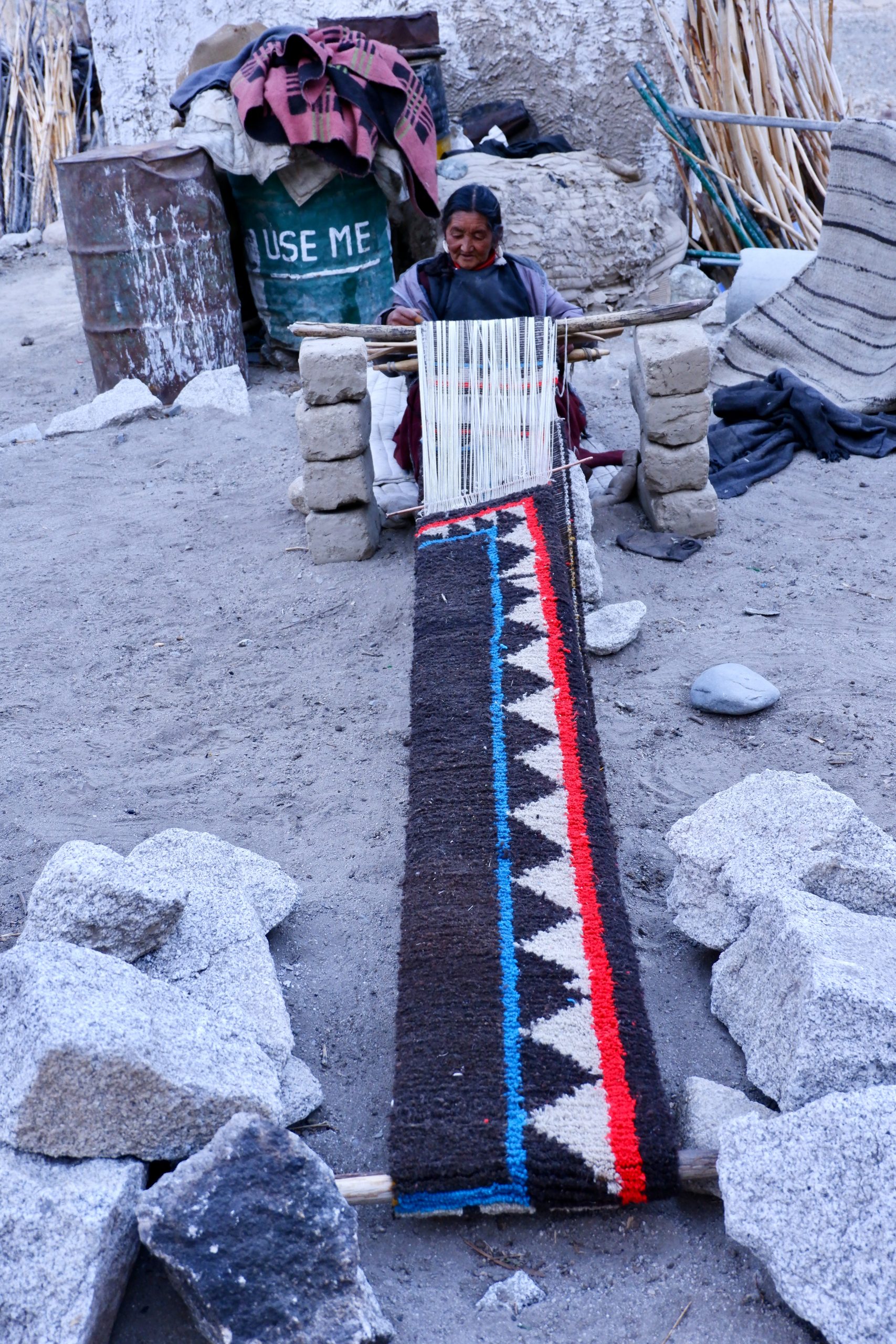 Weaving 2
Weaving 2
Then Dolma and I went back, talked a lot more, played with the child and slept. The next day the sun was shining and Dolma had to wash clothes that would dry quickly. The solar water heaters are a great relief here – you pour water in at the top and get heated water out at the bottom. Little Nurbu gets dirty quickly when he plays, so she had accumulated quite a bit of laundry. She took the larger pieces to her neighbour to spin them in her spin dryer.
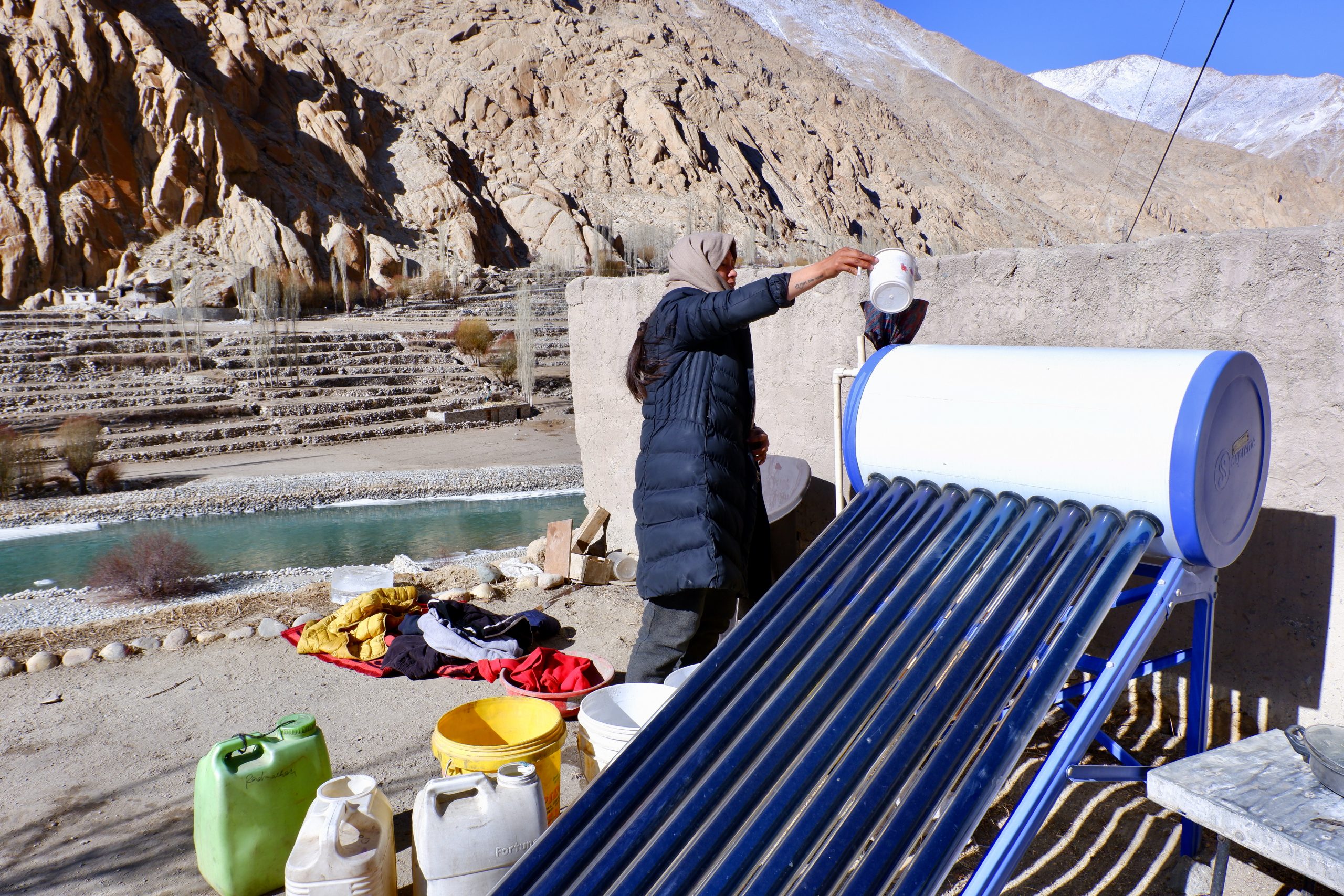 Solar water heater
Solar water heater
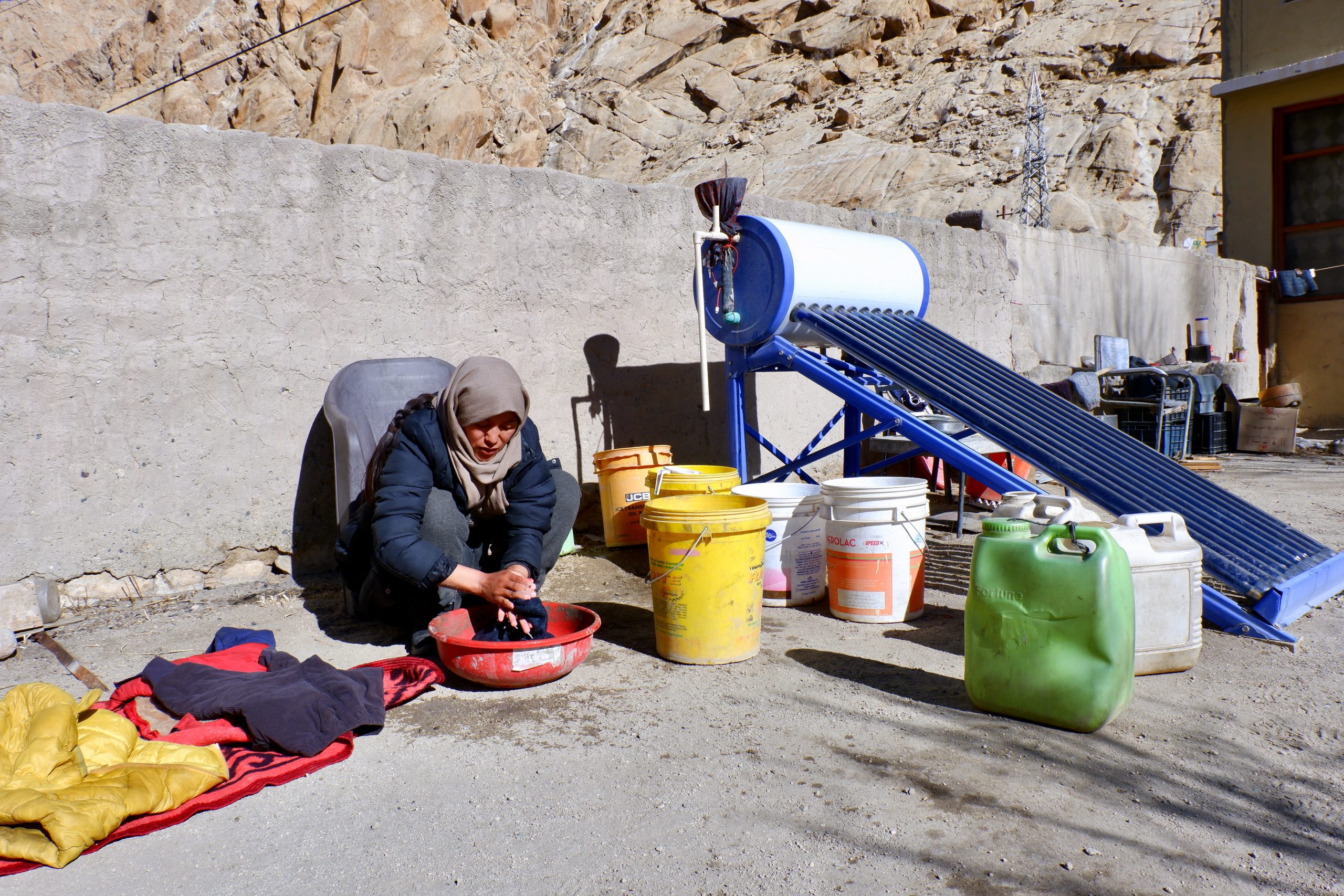 doing laundry
doing laundry
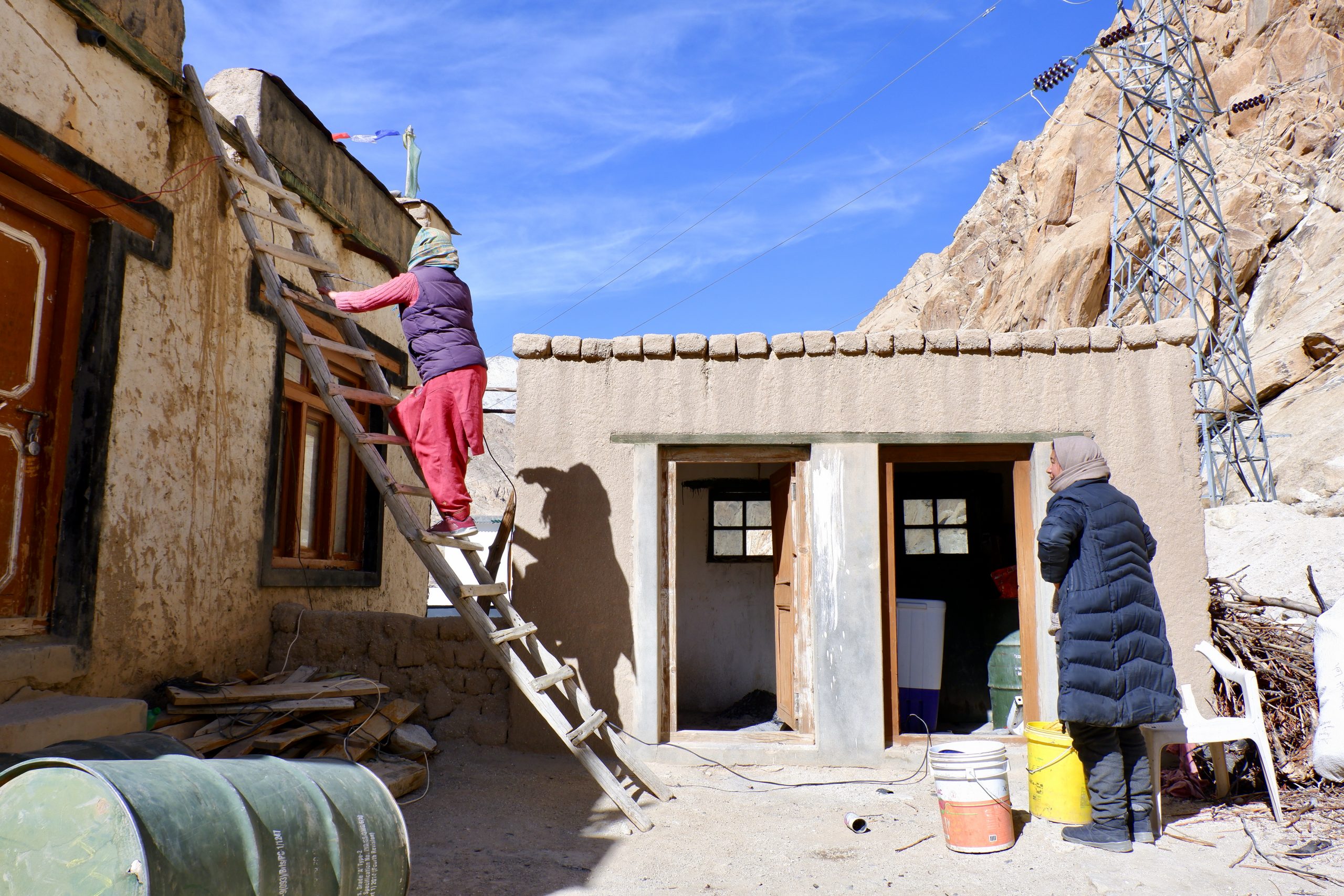 spin dryer has to be connected to power
spin dryer has to be connected to power
Then we went to the monastery. Community work was the order of the day. Some had already been working since the morning. We arrived in time for lunch, which was taken in community and the next steps were discussed.
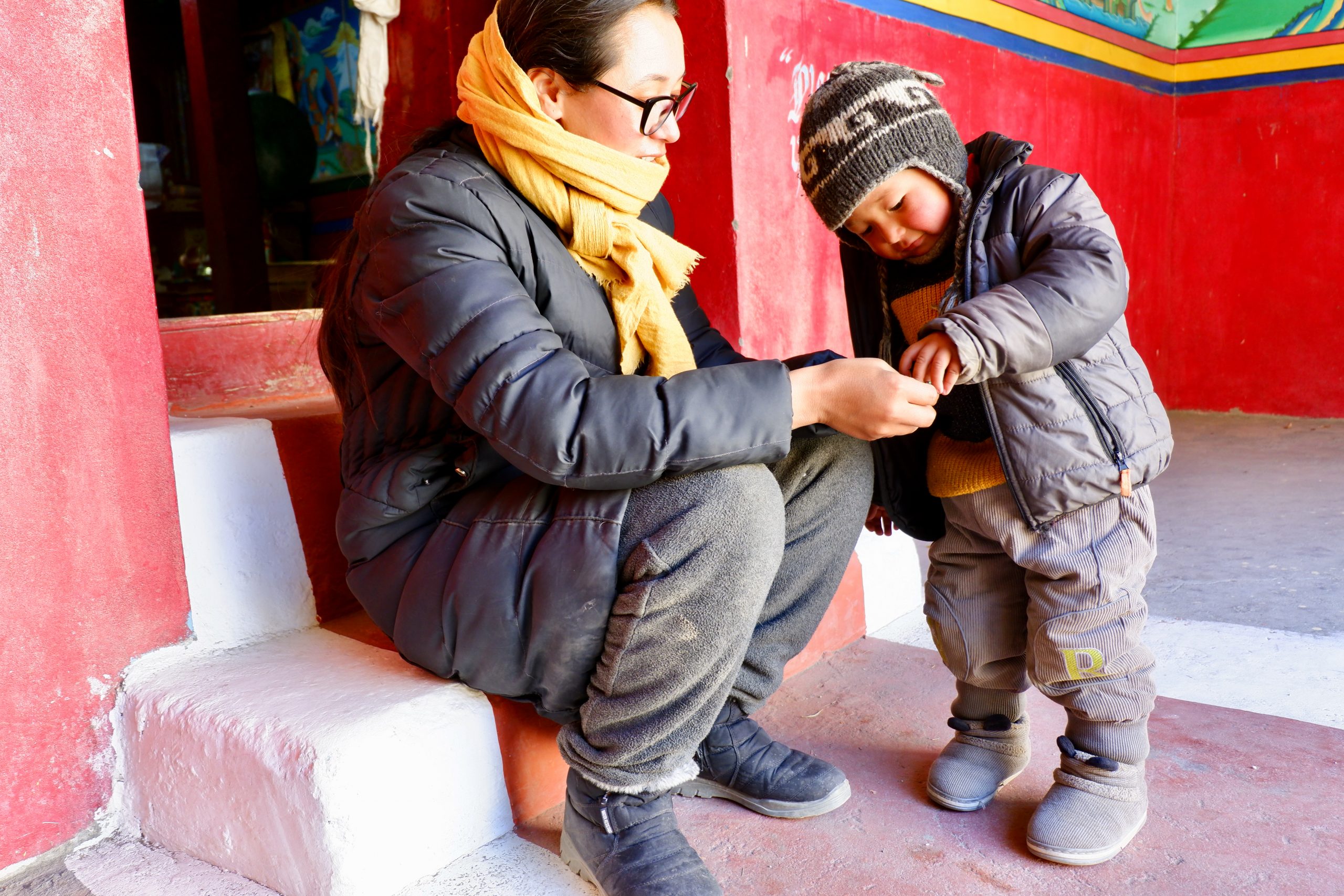 monastery stairs
monastery stairs
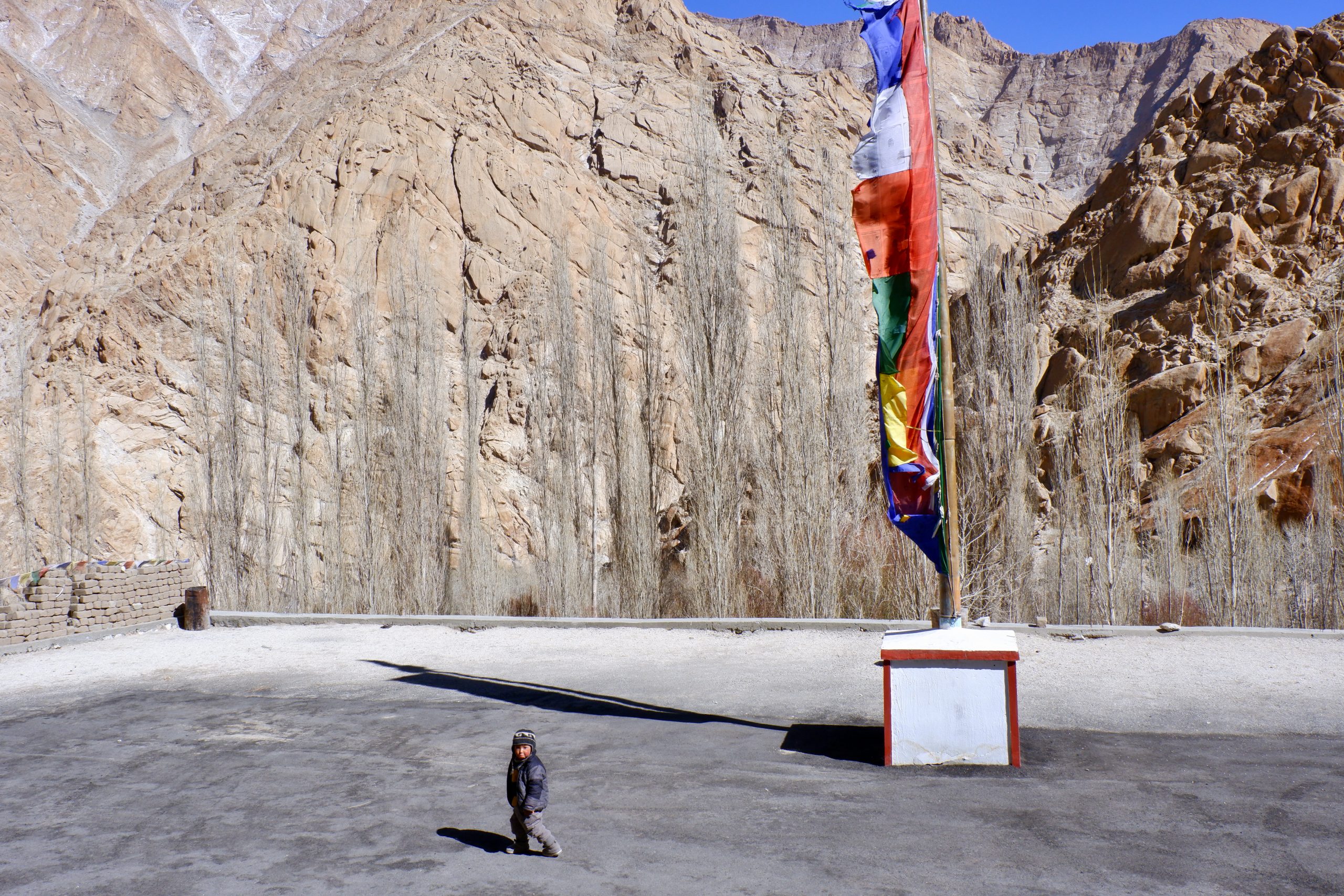 monastery courtyard
monastery courtyard
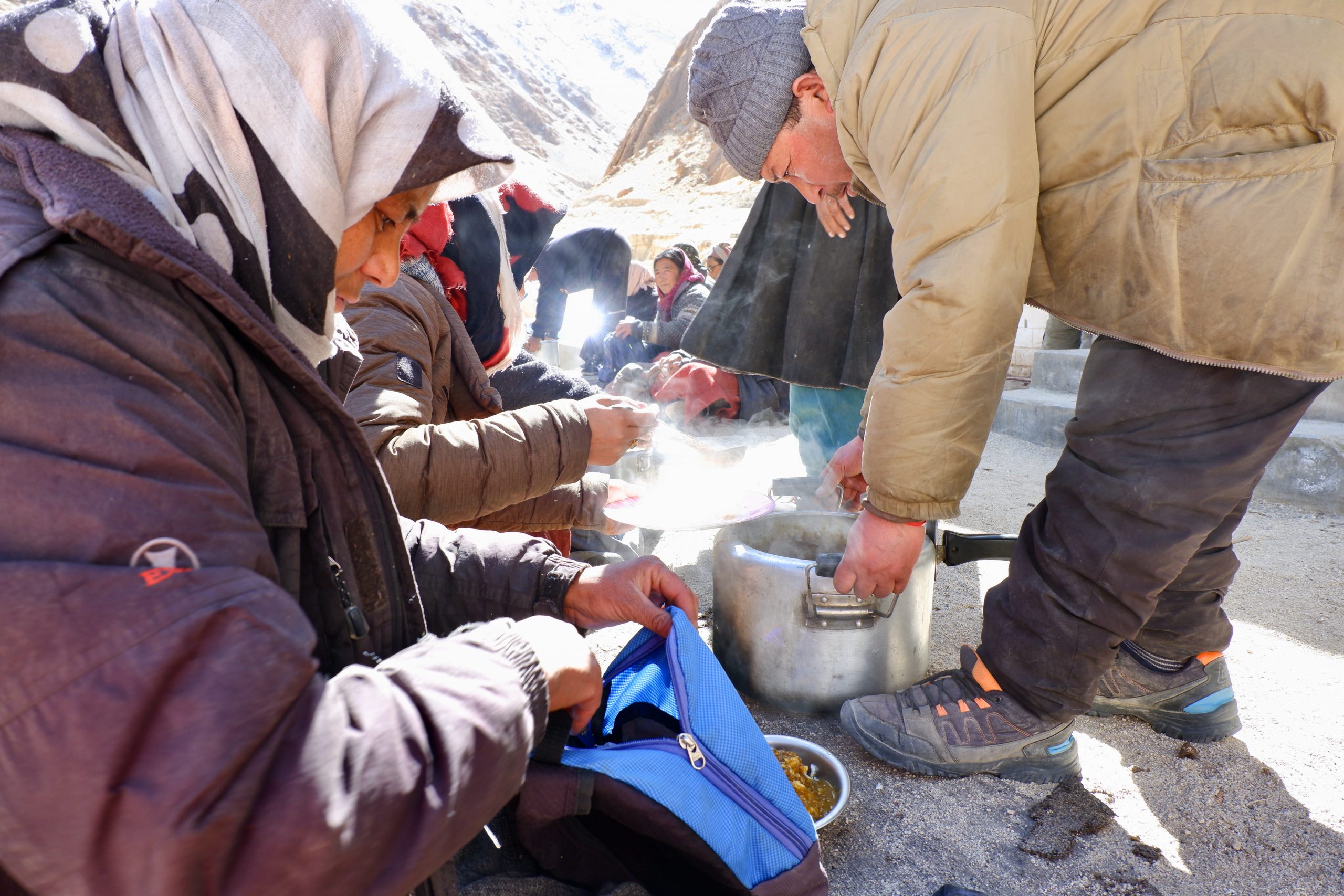 lunch
lunch
It was announced to fetch wood for the monk, who was not present. Further up the valley there is a community forest, means village property. That’s where we all went.
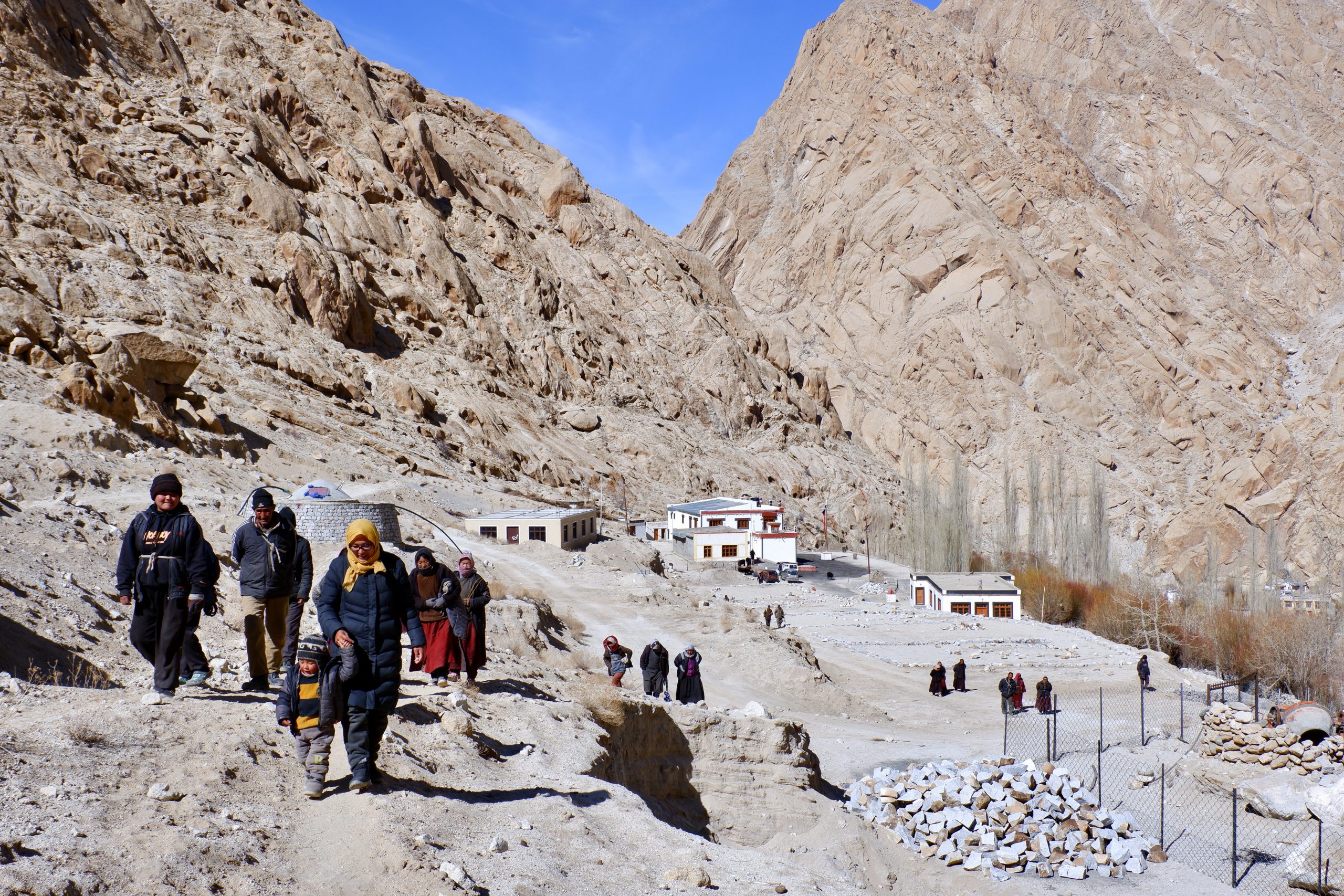 start
start
On the way, we passed two disused shandongs. In the past, snow leopards and wolves were caught there and then stoned. As they repeatedly killed the sheep, the animals were not so liked. In the meantime, there are no more sheep in the village and more love for wildlife, so the shandongs are no longer used. New stupas have been built next to some of them – like this one.
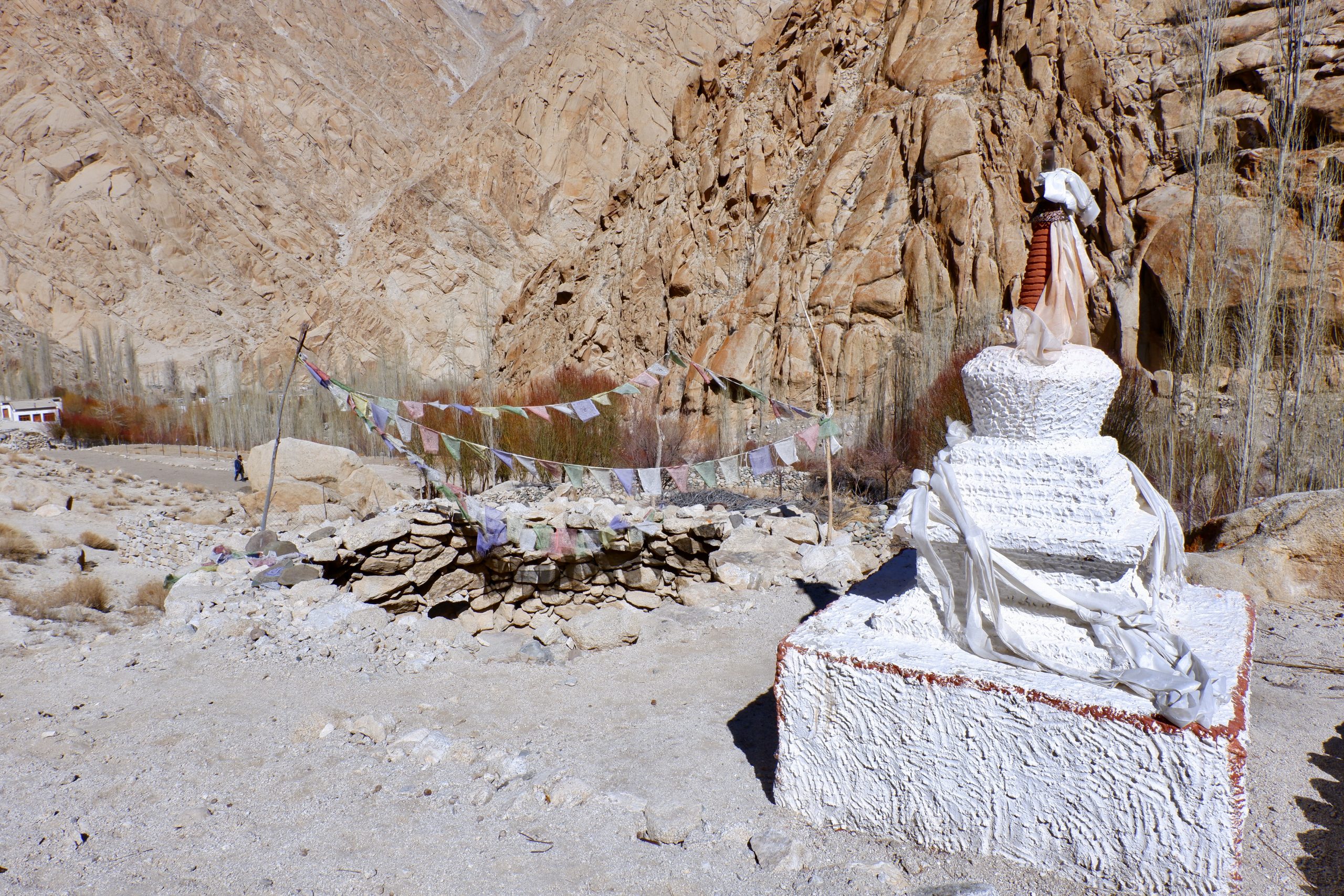 closed down Shandong
closed down Shandong
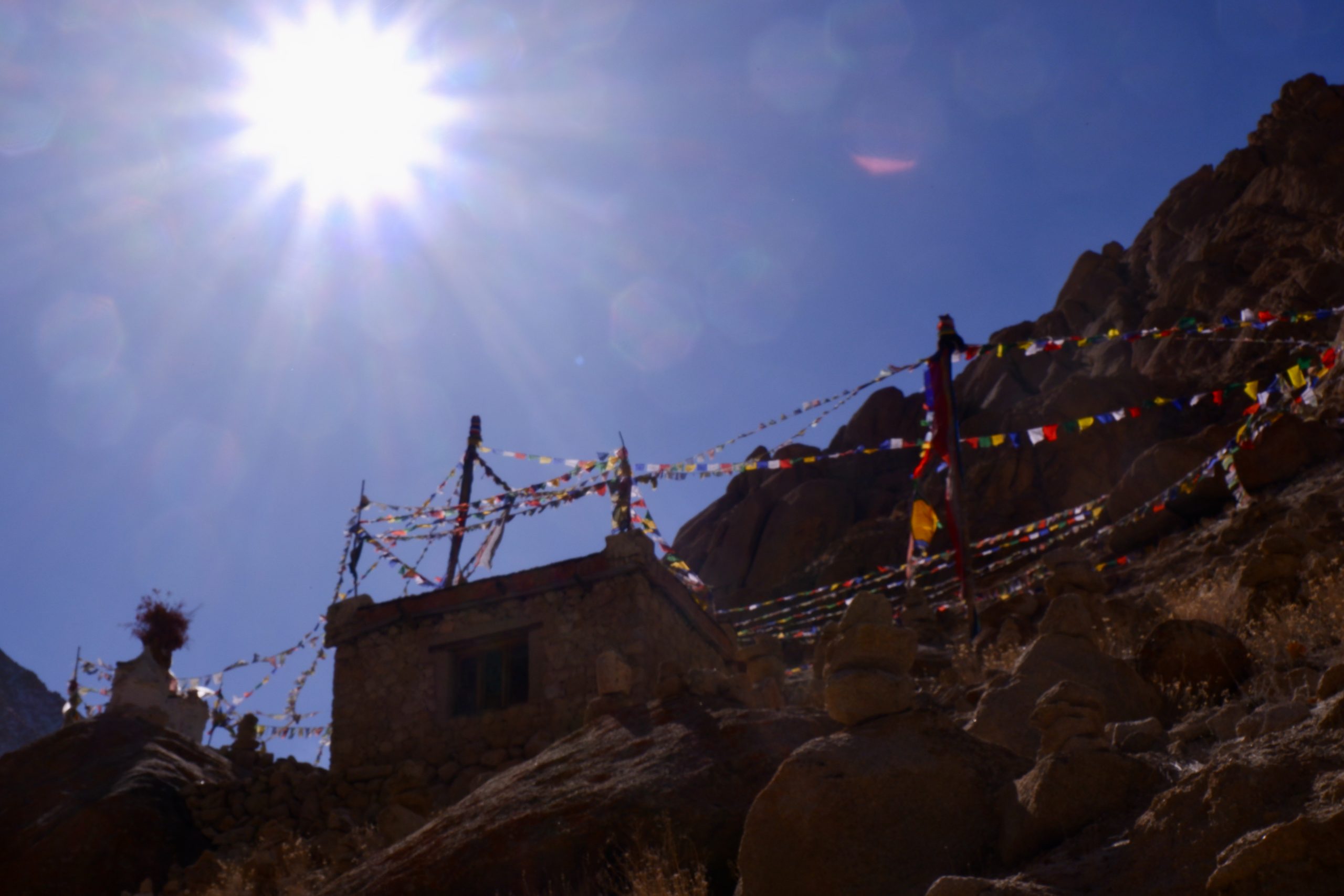 other holy place
other holy place
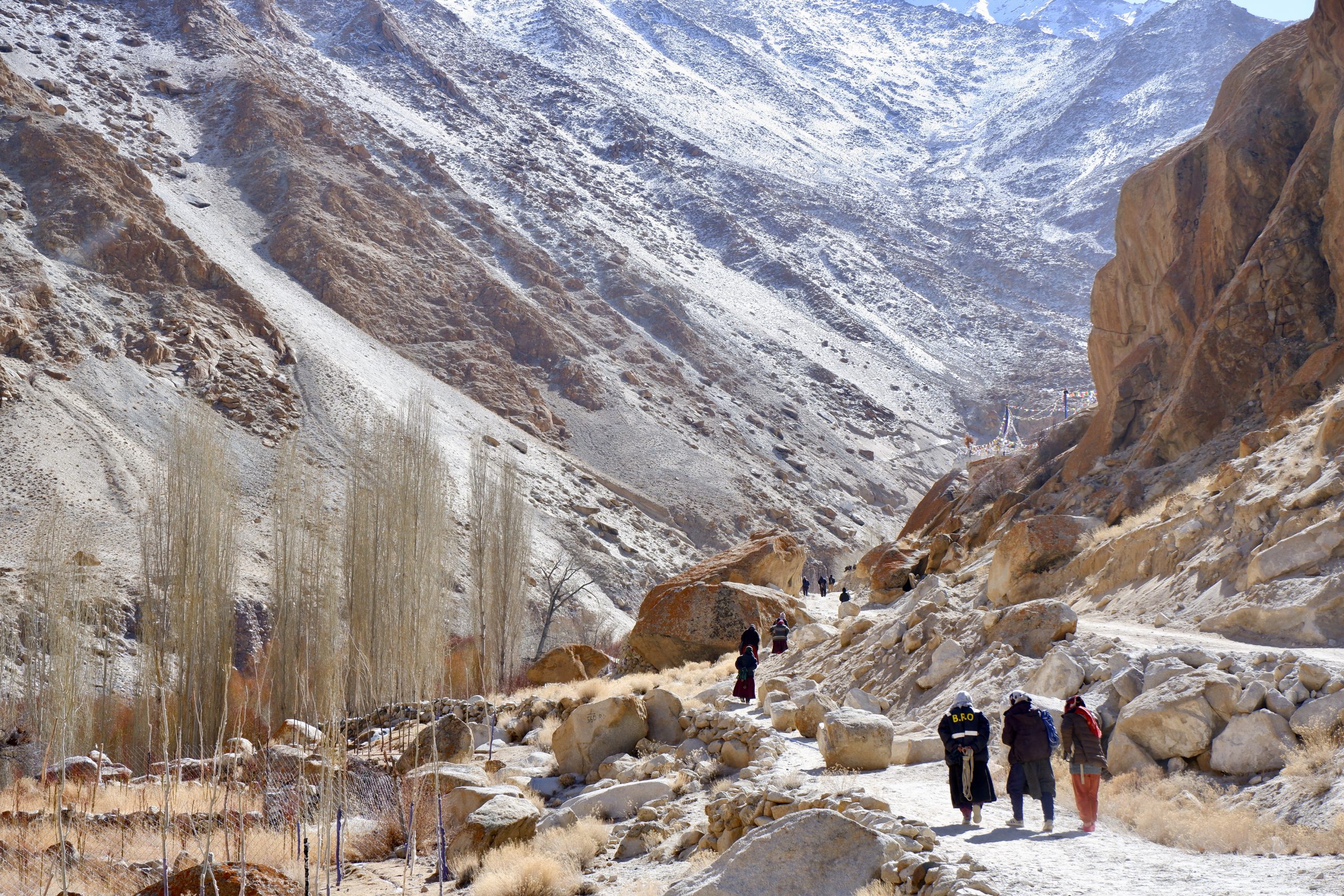 up the valley
up the valley
The landscape looked simply fantastic, it was so nice to go out alltogether and I was very happy. When we arrived at the forest, people sorted the branches into bundles.
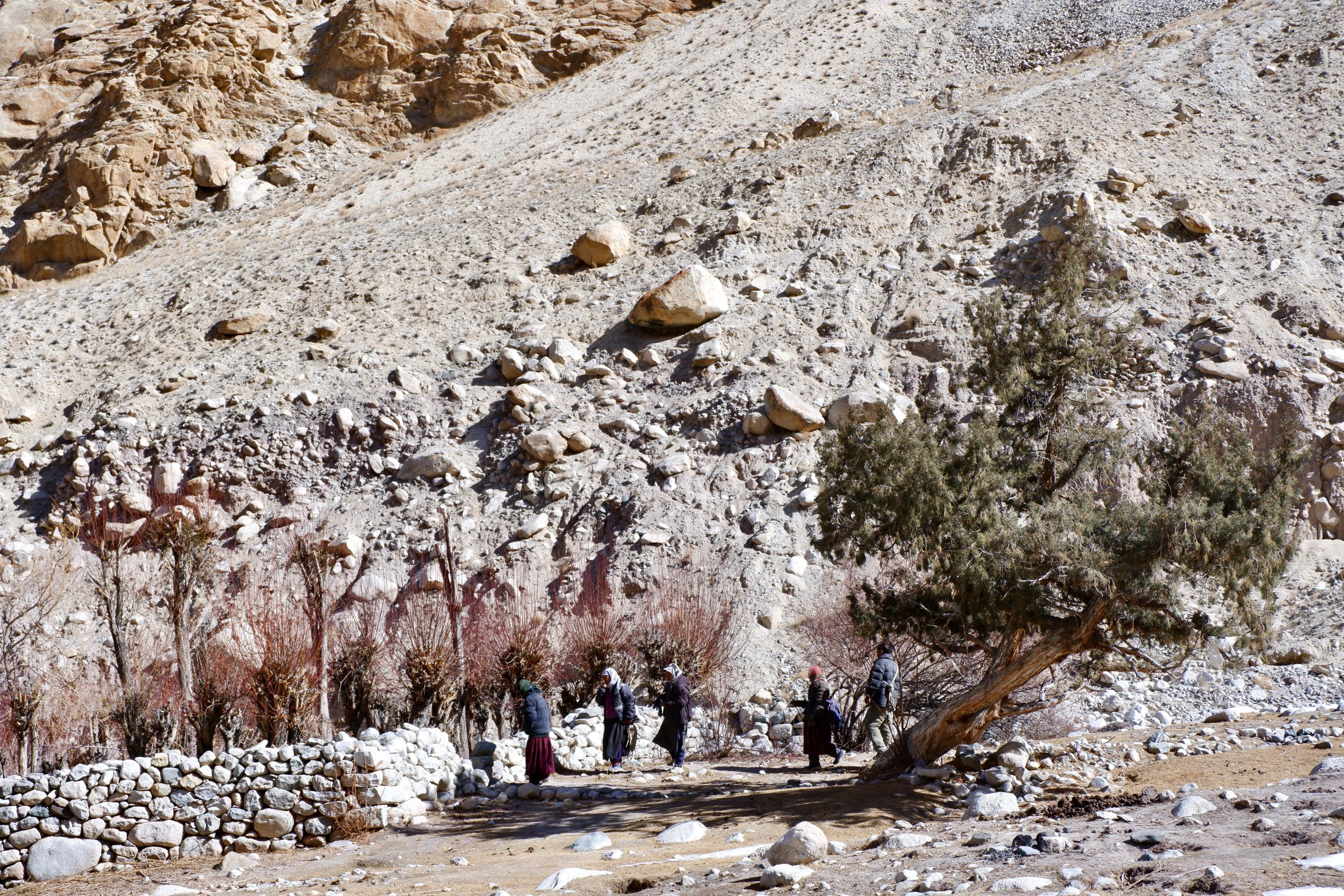 juniper and community forest
juniper and community forest
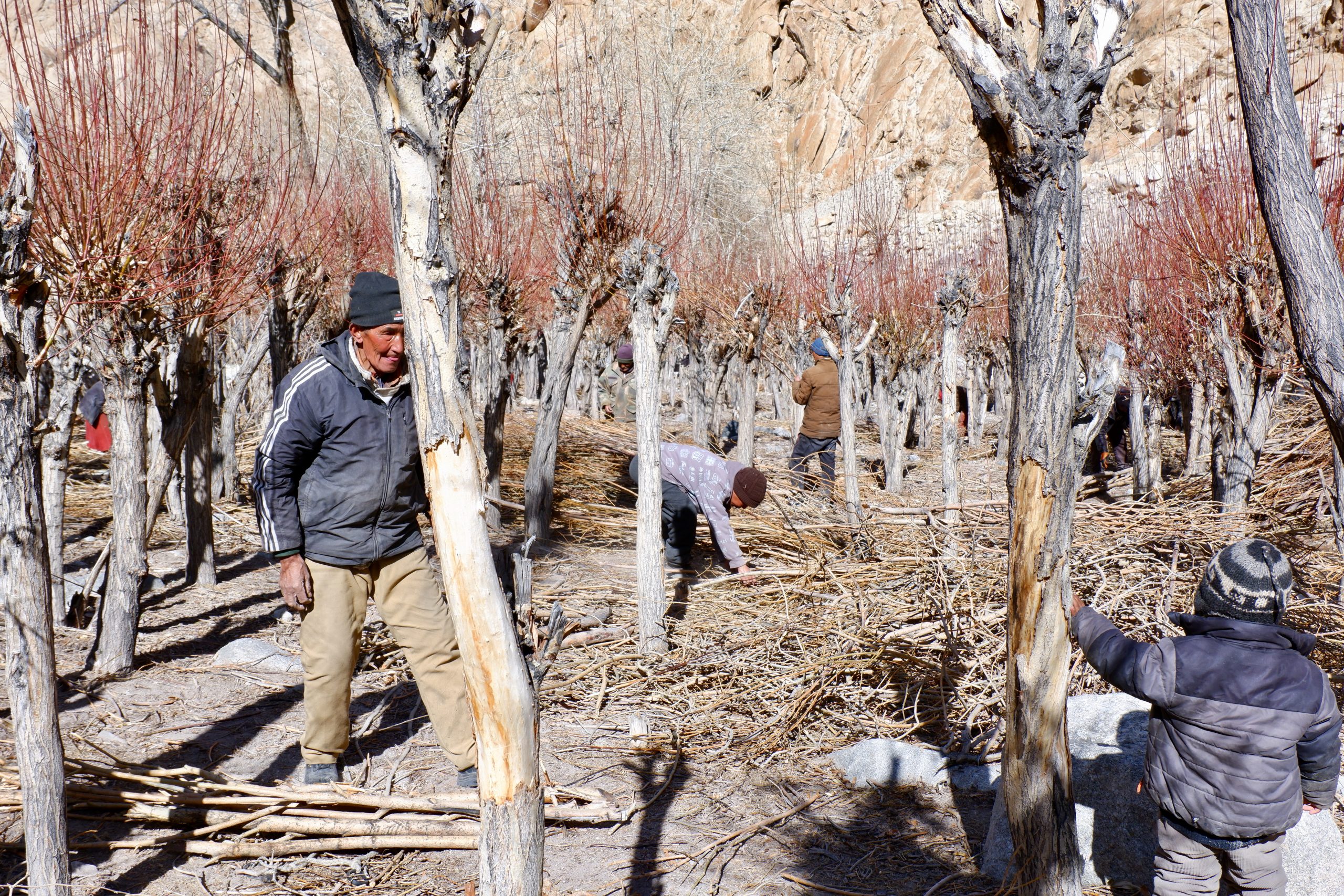 sorting of wood
sorting of wood
While people were busy with the wood, next door children were sliding down the frozen snow. To do this, they squatted on little “mini-sledges”. Little Nonno liked it, but didn’t dare at first. Mum showed him – and then he slid down together with her.
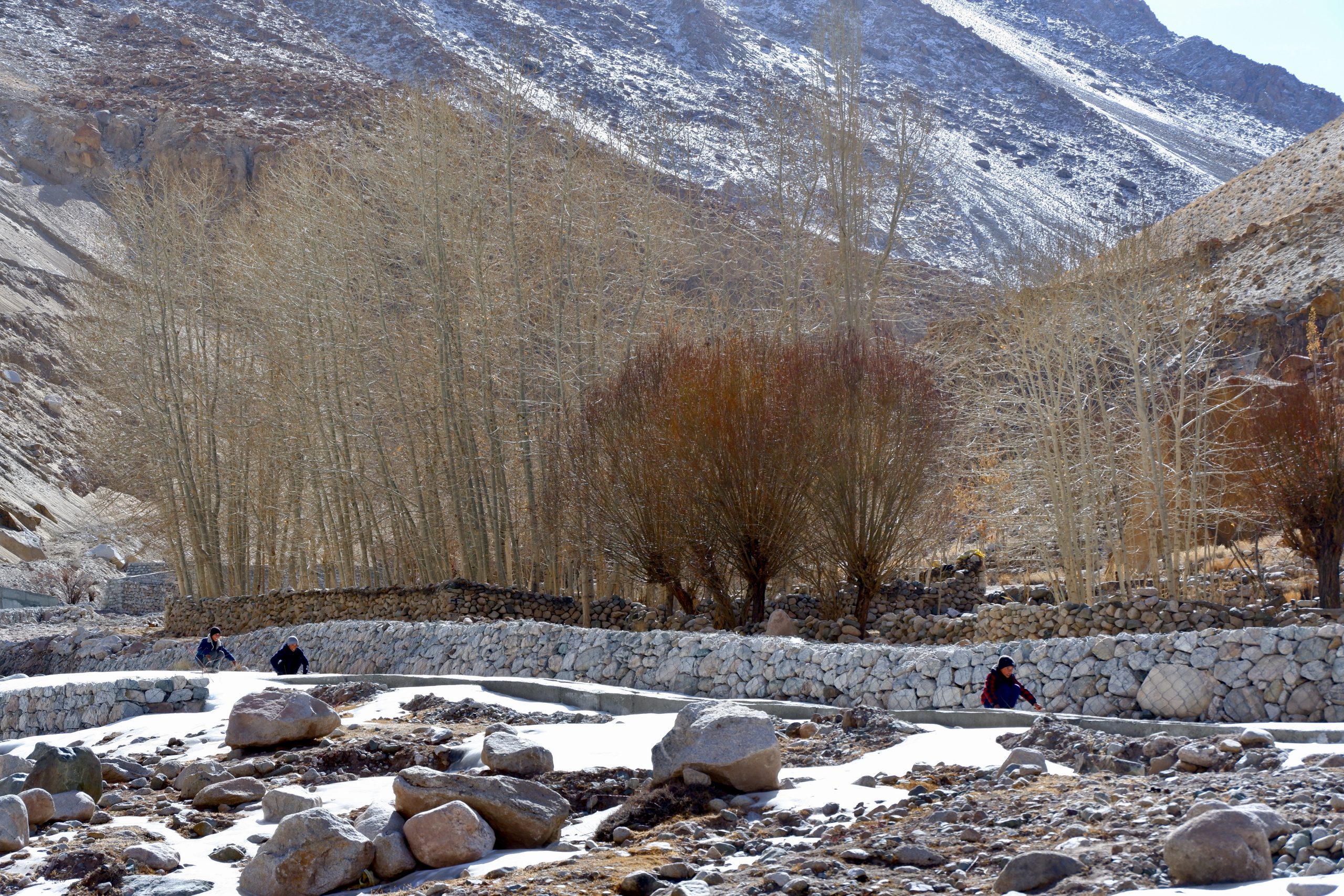 snowsliding 1
snowsliding 1
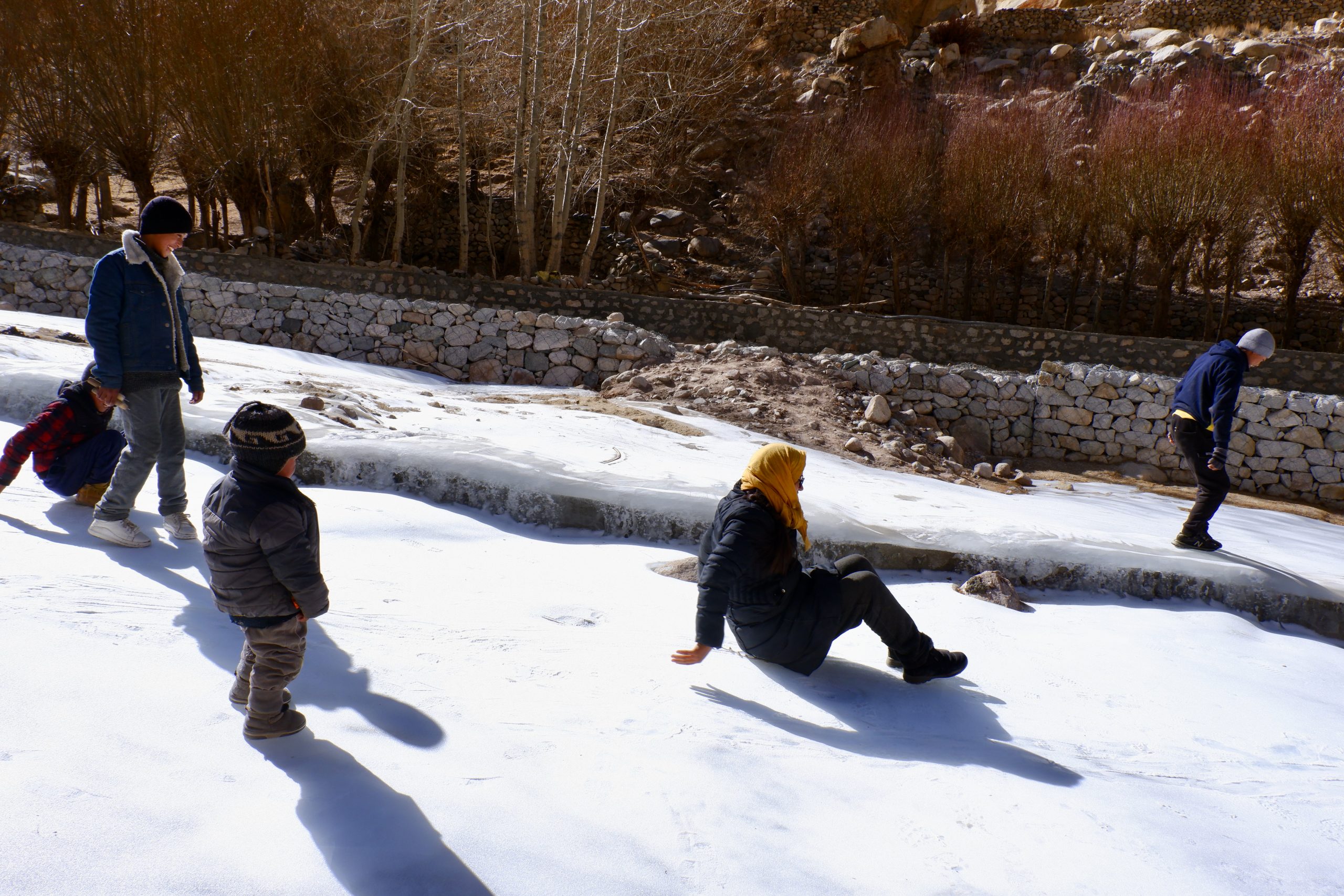 snowsliding 2
snowsliding 2
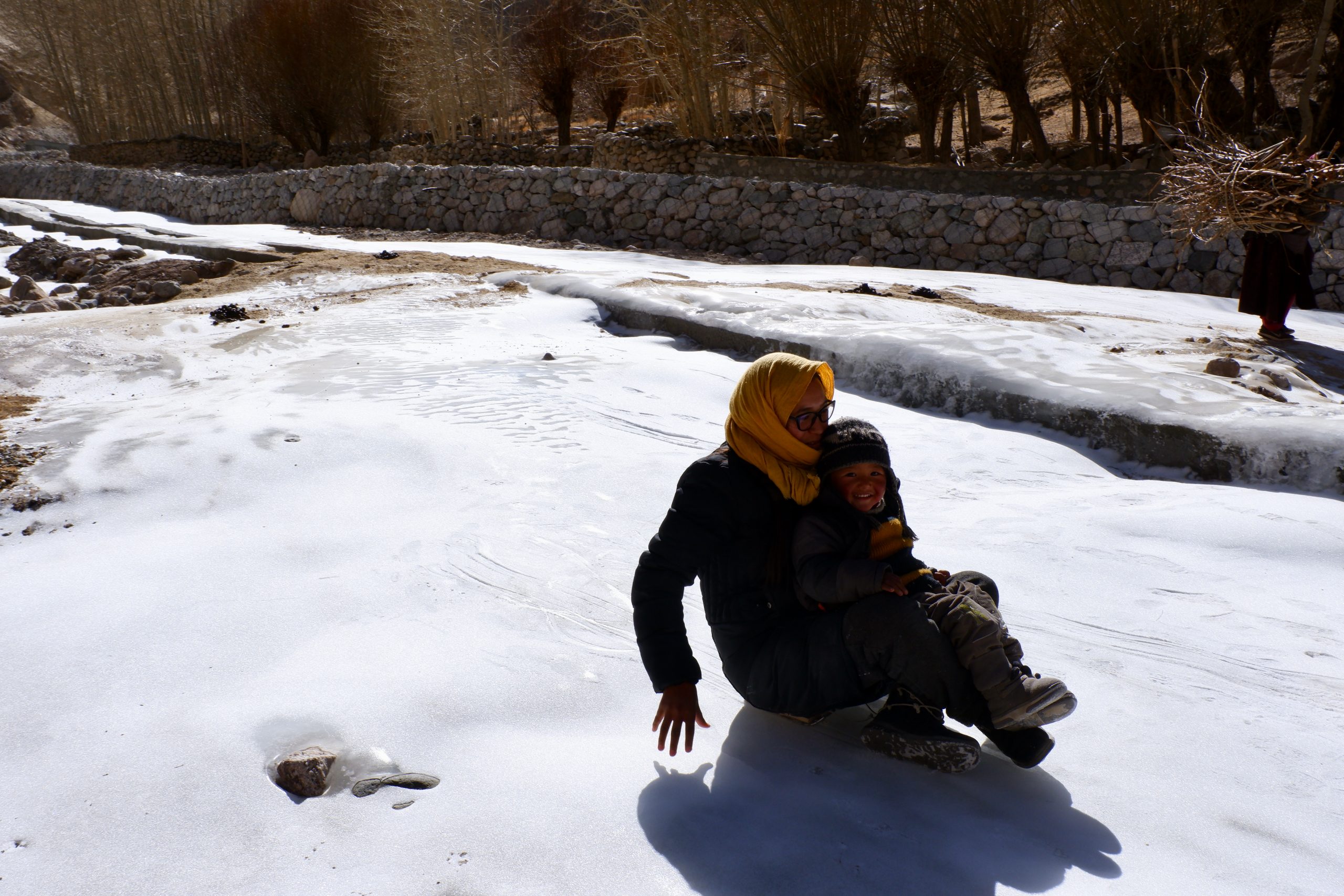 snowsliding 3
snowsliding 3
In the meantime, the people had finished loading wood and were on their way back (I was also carrying something, but not such a bundle).
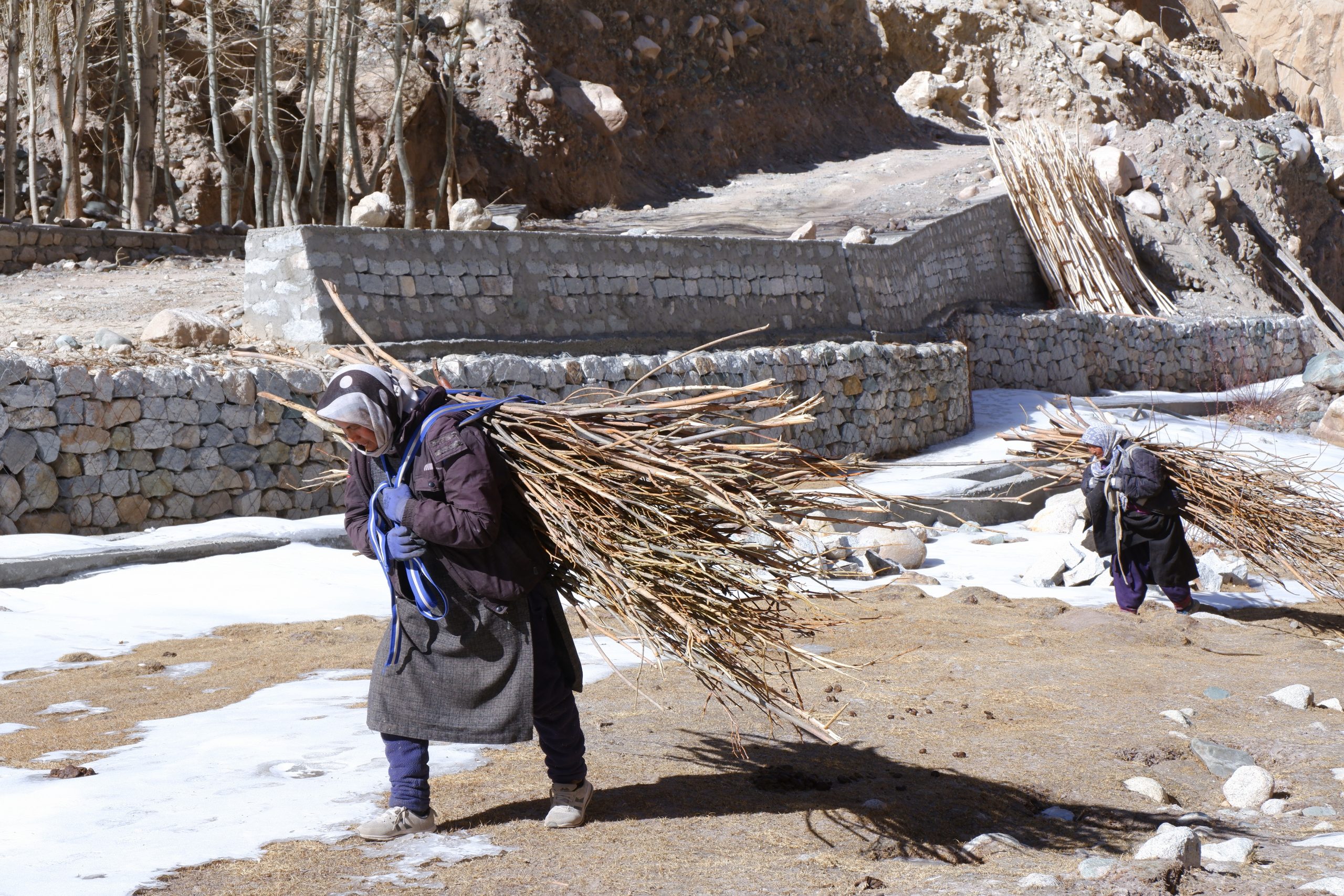 transport of wood 1
transport of wood 1
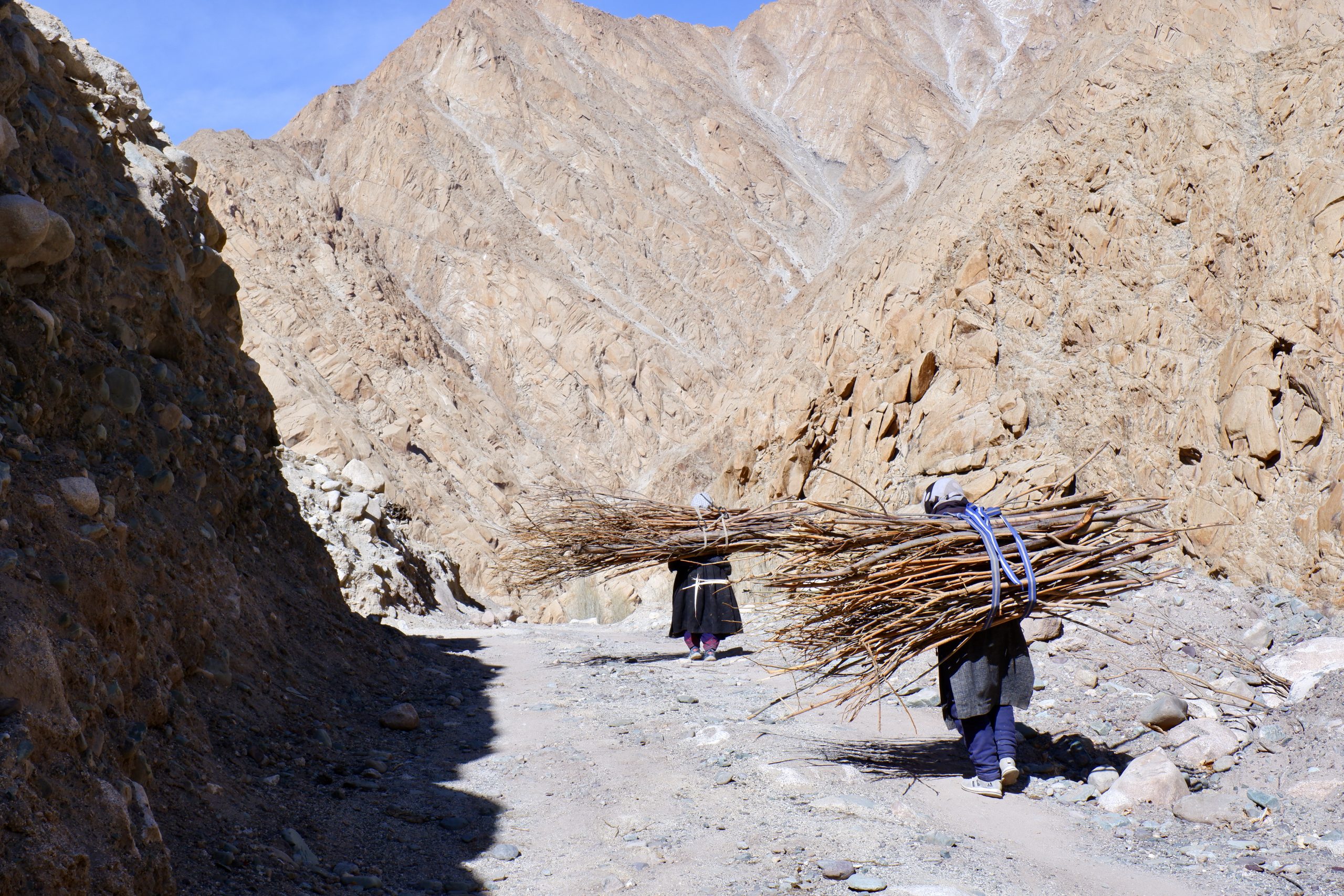 transport of wood 2
transport of wood 2
When reaching the monastery, I saw that it was not first time that people went.
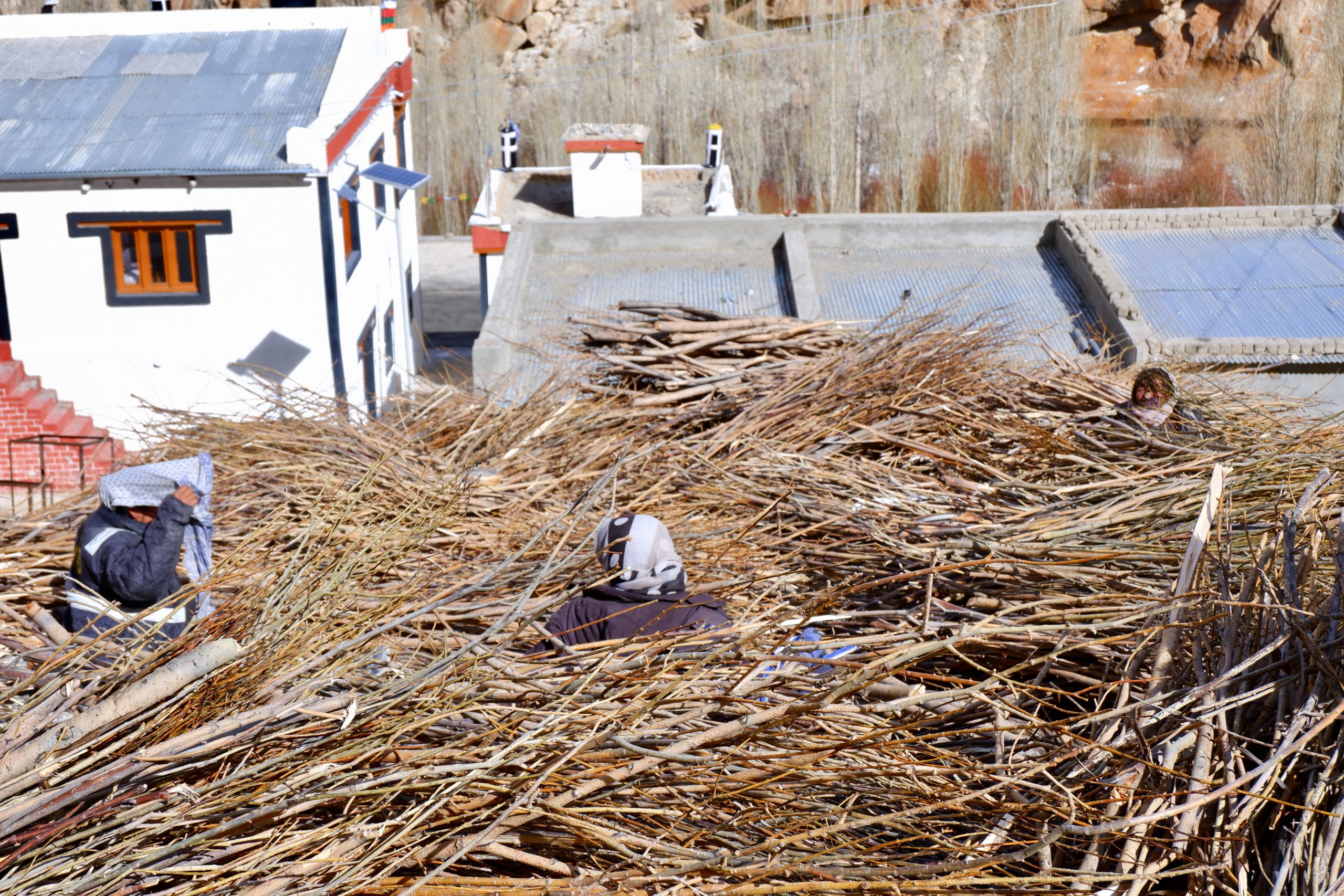 wood supply
wood supply
These days I’ve been thinking about the advantages of communities (togetherness, always someone there, sense of belonging) and the disadvantages (narrowness, obligation, etc.) and the fascination of how to deal with not liking each other in the long run. There were quite a few who were obviously not really popular. And how it is with traditions.
We went home and in the evening I went to Leh with Dolma and her family. I was amazed at how much lighting there is now. Are you curious about adventures in Leh?
